What does polyamorous mean? Should you give polyamory a go?
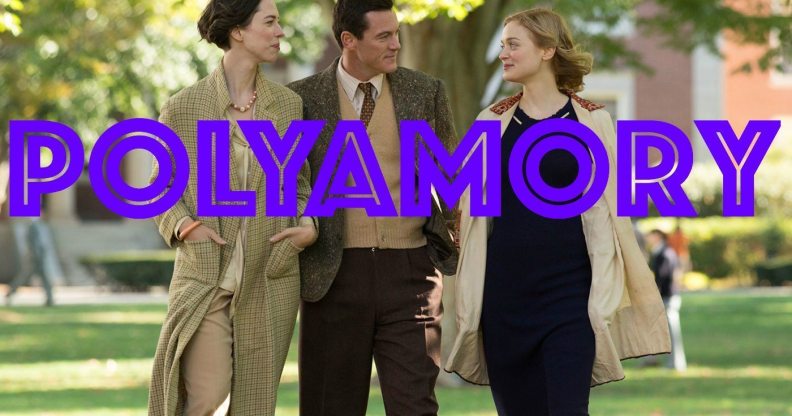
Credit: Annapurna Pictures
Couples have always coupled up in pairs, and spent their lives together – or at least portions of their lives together – as duos.
Why? Because… erm… we don’t know, and we’ve not got enough time to research how that societal norm came about.
What we do know is that some people aren’t into the twosome thing. Some people are polyamorous…
Which means, simply, a person who has open sexual or romantic relationships with more than one person at a time.
A very brief history of polyamory

Image: Getty
Related: Three gay men marry as Colombia gets its first recognised polyamorous family
The term comes from the Greek word ‘poly’, which means “many, several”, and the Latin word ‘amor’, which means “love”.
LGBT communities have a long history of polyamory – one dating all the way back to Lord Byron and the Shelleys, continuing through to Harvey Milk and the Radical Faeries. A 2006 study showed that 28 percent of lesbians, a third of bisexuals, and almost two thirds of gay men are open to non-monogamous relationships.
The first usage of the word polyamory is credited to pagan priestess Morning Glory Ravenheart Zell in 1990. It first appeared as “poly-amorous” in her article ‘A Bouquet of Lovers’, published in Green Egg Magazine.
The words polyamory, polyamorous, and polyamorist were added to the Oxford English Dictionary in 2006.
Polyamory: ethical non-monogamy
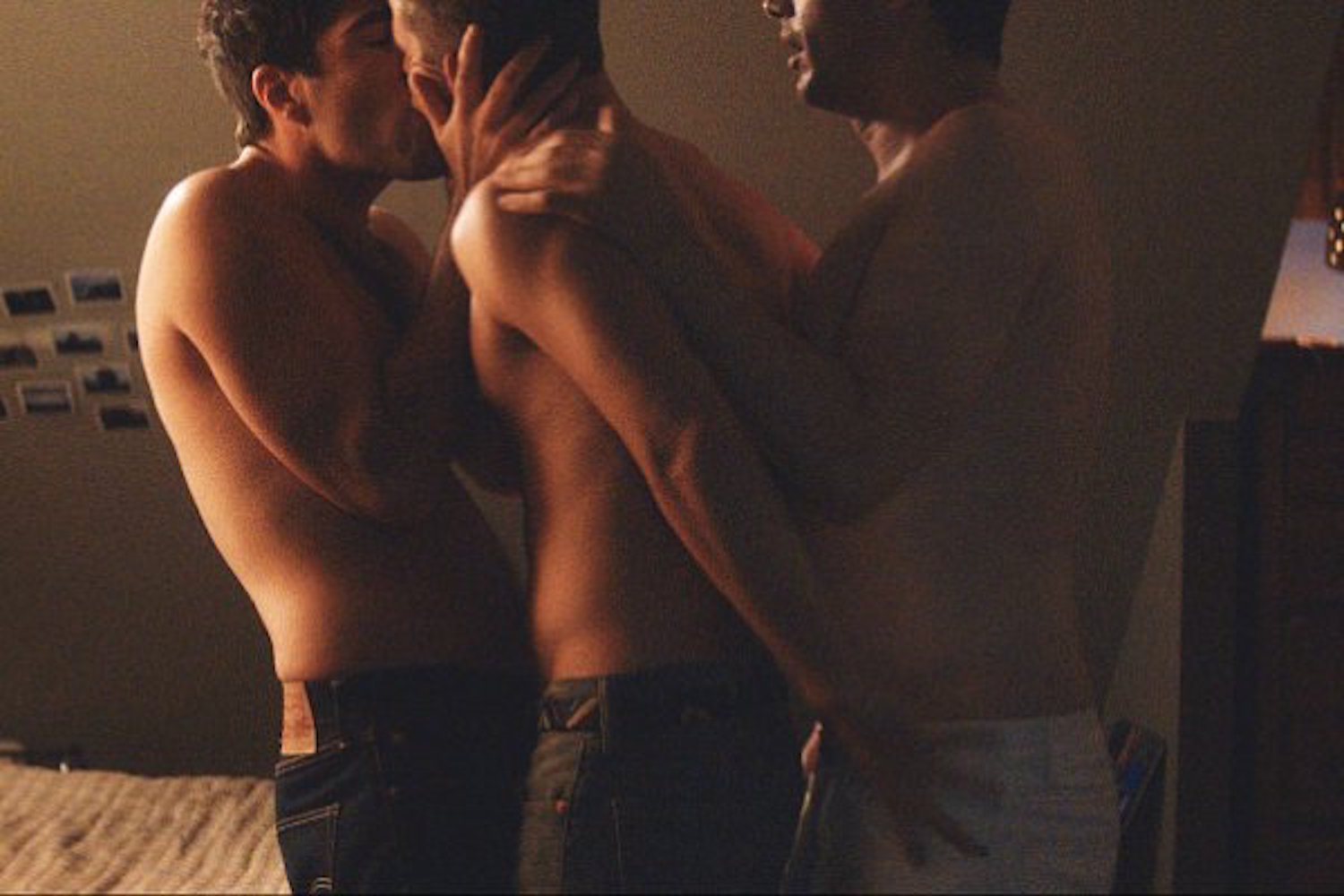
James Franco, Zachary Quinto and Charlie Carver in I Am Michael
Polyamory is described as ethical, consensual non-monogamy. All parties – whether three, four, five, or eighteen of them – are open and honest, and reject the view that sexual and/or loving relationships are exclusively between two people.
Polyamorous arrangements are – of course – varied, and depend on the people involved, and their interpretations of ethics.
It’s not always easy to define polyamory, though it’s easy to say what it’s not…
Polyamory does not involve adultery, cheating or lying.
Polyamorous Flags and symbols
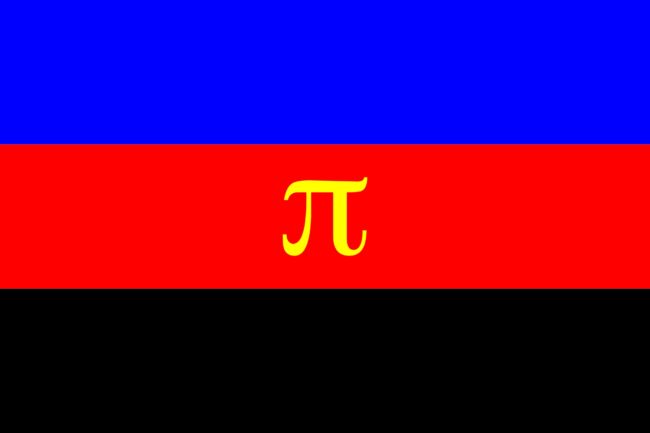
Designed by Jim Evans, the Polyamory Pride Flag is made up of blue stripes (to represent openness and honesty among all partners), red (for love and passion), and black (signifying solidarity with those who are forced to hide their polyamorous relationships).
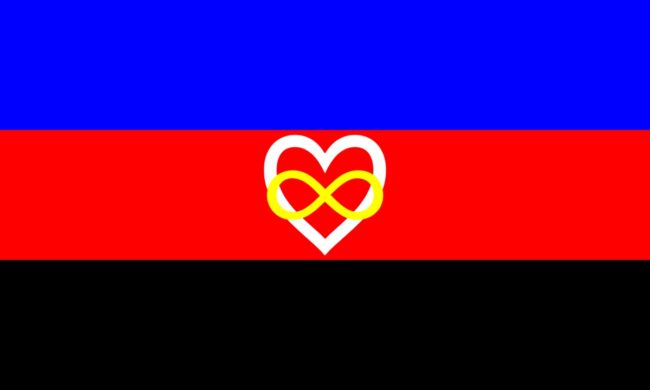
Related: Comment – Why polyamorous marriages are the next step to equality
In some flags, polyamory symbols feature – either the gold Greek ‘pi’ symbol, or the infinity sign within a heart. Another polyamory symbol is a multicoloured parrot because parrots are often called ‘Polly’, and that sounds a lot like ‘poly’.
Polyamory in the media
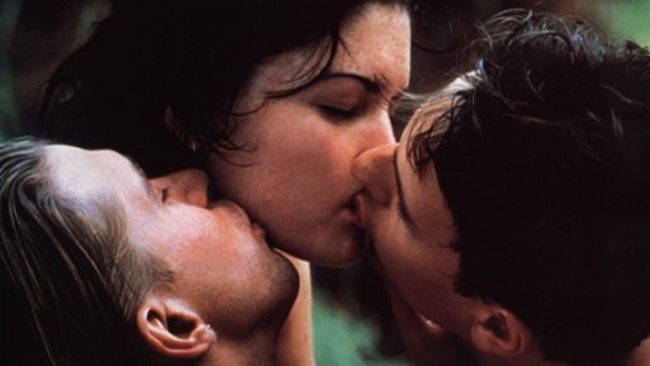
The ménage à trois has been featured in various films, including Oliver Stone’s Savages (2012), François Truffaut’s Jules et Jim (1962),Philip Kaufman’s Henry & June (1990), Woody Allen’s Vicky Cristina Barcelona (2008), Bernardo Bertolucci’s The Dreamers (2003), and Andrew Fleming’s Threesome (1994).
More recently, polyamory is depicted in Professor Marston and the Wonder Women (pictured at the top of this article) – a 2017 American biographical drama film about American psychologist William Moulton Marston, who created the fictional character Wonder Woman.
It stars Luke Evans as Marston, Rebecca Hall as his legal wife Elizabeth and Bella Heathcote as the Marstons’ lover and live-in mistress, Olive Byrne.
The film’s director and writer, Angela Robinson, told The Guardian of their relationship: “Poly relationships or ‘kink’ on film have usually been portrayed as salacious or transgressive in a negative way and I didn’t want to do that.
“Narratively, I wanted to make a really accessible story that told the story of three people falling in love. I would rotate the point-of-view of the film through each of their viewpoints. I wanted the audience to root for them to be together,” she added.

Meanwhile, Deadpool 2 will feature a bisexual and polyamorous superhero.
Shatterstar, who has appeared in Marvel comics since 1991, will star alongside Ryan Reynolds’ pansexual Deadpool in the as-yet-untitled sequel to the 2016 hit.
Though there are very few known polyamorous celebrities, Alexa Chung previously revealed that she’s open to polyamory and same-sex relationships, while actor Nico Tortorella opened up about growing up queer and navigating polyamory.
Not to be confused with…
Polygamy. GAMY and AMORY are different words, because POLYGAMY and POLYAMORY are different things.
Polygamy is the practice or condition of having more than one spouse.
Polygamy – or polygyny – occurs in some Muslim societies and some fundamentalist Mormon communities when one man has multiple wives.
Can three people get married?

No.
However, in a PinkNews exclusive, Green Party leader Natalie Bennett said her party is “open” to discussion on the idea of civil partnership or marriages between three people.
In 2005, speaking in a question and answer session with PinkNews readers, Bennett was asked whether she supported the right of polyamorous relationships to get married or have civil partnerships.
Meanwhile, a study by the US-based organisation Loving More in 2012 found that 65.9% of more than 4,000 polyamorous people said would want to marry multiple people if such marriages were legal.
It remains to be seen if more than two people will be able to get married in the future.
We’ll keep you posted.

